Old-School Gaming Reconnects Us with Folk Storytelling Traditions
The OSR, The NSR, and Social Justice
Hey everyone, it’s your favorite gnome-curious map-aficionado back again to grab a complex topic by the horns! Let’s talk about OSR/NSR games and their relationship to social justice. Yes, I know I’m usually telling jokes, but this one is serious. It’s a topic that matters to me and defines how I relate to gaming, so I hope you take the time to read it and I look forward to your replies.
I want to highlight one way that OSR games can assist in the social justice landscape, a way that you might not expect. Here’s the summary: OSR/NSR games are a useful tool for helping people connect with cultural story-telling traditions. And OSR can play an important role in helping diasporic ‘white’ people reconnect with lost traditions.
Well? Did you expect that? If you didn’t, consider reading more below.
Let me set a few things straight. The Old-School Renaissance (OSR) is often associated with old-school racism, as well as old-school sexism, colonialism, and poor hygiene while we’re at it. Just last week, the OSR community again faced internal controversy when Goodman Games announced their funding campaign for City-State of the Invincible Overlord, a game associated with the bigoted group Judge’s Guild. When searching for problematic opinions in the OSR, one rarely has to search for long.
Because of the aforementioned issues, when well-intentioned people discuss their support of the OSR, these supporters are obliged to explain what they like about it. Do they like the dungeons? Or is it the violence? Or maybe it’s the way goblins and orcs are framed, compared to contemporary gaming? Maybe it’s the black and white art? Or just the black and white moral structures? It’s a difficult hobby to defend.
Corralling the non-offensive aspects of OSR games is a common enough practice that the most popular tenets of OSR have been given a new home under the umbrella of the ‘New-School Revolution’ (NSR). The NSR supports ideas like emergent gameplay, rules-lite arbitration, and a living gameworld, and includes games like Cairn, Into the Odd, and Mausritter. I’m a big fan of the NSR.
Core posts defining the NSR highlight the importance of a ‘weird setting’. Cairn’s creator Yochai Gal unpacks the weird setting definition, stating that a ‘weird setting’ often means the subversion of fantasy and sci-fi tropes. It’s impossible to ignore the fact that some of the ‘tropes’ we are subverting are the offensive elements coming from some parts of the OSR community. Though NSR folks rarely focus directly on this aspect of their games, the subtext is omnipresent. The shape of the NSR will always be a reflection of the part of OSR that it is not.
The creative choices of OSR and NSR designers are fascinating to me, and I believe they hold unique value, often overshadowed by offensive outliers and the memory of bigotry. As I see it, OSR and NSR creative endeavors actually have a greater potential for creating pro-justice outcomes than other contemporary TTRPGs. To explain why, we need to discuss corporate gaming companies’ justice practices.
The NSR isn’t the only group trying to distance themselves from the problematic past of DND. Big-box gaming companies like Hasbro also navigate social justice concerns while producing games like Dungeons and Dragons 5e and the trading card game Magic: The Gathering, both of which are intended for a global audience. What’s interesting is that NSR and Hasbro are navigating a similar issue, but with contrasting strategies informed by divergent goals.
Here’s an example where NSR and 5e approach the same situation differently. Let’s talk about the classic orc. Introduced by Tolkien, remixed by Gygax, the classic orc of most OSR games is an antagonist, a ferocious beastman or a weapon of war. The problem is that orcs often resemble humans in a way that can be demeaning to people of color and especially tribal people, especially when orc ‘tribes’ are cast as inferior to the ‘civilized’ kingdom. So, is the classic orc racist? OSR representatives plead “no, not necessarily!” But Hasbro and NSR each have their own answer.
While I won’t speak for the individuals employed by Hasbro, overall the company is congruent in its messaging. Hasbro says, “Yes, orcs are indeed a metaphor for people of color, and it’s important that the depiction of orcs reflect positively on today’s communities of color as much as possible.” It’s a well-meaning opinion, and one that contextualizes pictures of the 5.5e orcs in a setting vaguely reminiscent of a south-western US or Central American culture. As the linked article mentions, a lot of bad arguments were thrown around about this image. But at the very least, commenters are right that the orcs certainly don’t appear antagonistic.
This depiction makes sense given Hasbro’s viewpoint on orcs, but NSR doesn’t necessarily share the same perspective. NSR has inherited a principle from OSR; they inherited the concept that the gameworld should be mysterious, unknown, harsh, deadly, and otherworldly. In Gal’s definition of NSR, he highlights a “clear separation between the weird and normal”. I dig it! But wait a second, are orcs ‘weird’ or ‘normal’? In OSR they’re weird, but in 5e they’re normal. And in NSR they could be either, depending on the game creator.
There’s a lot to be said regarding normalization of the weird. The two main points I want to make are first, that Hasbro’s efforts for normalization are duplicitous and have negative outcomes, and second, that the interaction with the weird is what allows the OSR and NSR to be a tool for social justice.
It turns out that a lot of people of color (including several of my players) identify with orcs. This connection exists for real people in the world, so it makes sense then to normalize orcs as protagonist humanoids so that marginalized people feel included and represented in TTRPGs. But there’s a problem here. If people of color identify with orcs, then isn’t it because both groups have both othered in Western society and its narratives in the first place? So, if Hasbro is pushing normalized orcs, then they’re probably also committed to the parallel effort of normalizing and supporting people of color in society, right?
And of course, this is not the case. While Hasbro does support a diverse workforce creating diverse products, this effort exists within the company’s overwhelming adherence to aggressive profit-driven capitalism and monopolistic business practices. These are the same practices that perpetuate marginalization, resource destruction, and class inequity, the same practices that have always been used to objectify and exploit communities of color.
Like most corporations, Hasbro’s first priority is profit, and inclusion is secondary. If they can make extra profit through inclusion, all the better. But when the two are in conflict, it’s the inclusion that gets sacrificed. Diversity is welcomed, as long as it doesn’t upset those in power. Which means any time there’s any real issue, like genocide in Palestine, oppression of Uighur muslims, or out-of-control capitalism in the USA, Hasbro’s products will avoid those topics.
By claiming diversity while avoiding controversy, Hasbro is exploiting the concept of inclusion. That’s why I label the 5.5e picture of orcs as ‘well-intentioned’. I like the idea on the surface, but in the context of Hasbro’s priorities, it’s clearly tokenization on some level. In addition, by attempting to normalize orcs as a way to include people of color, while simultaneously participating in regimes that actively oppress people of color, Hasbro drives a wedge between the orcs that formerly represented people of color and those people of color who identified with those marginalized orcs. It’s an utter fantasy, and not a good one. If the same entity oppressing you is the one that determines your fantasy, then it’s called propaganda, not art.
“Well thank you for explaining how bad things are Mr. Gnomestones,” you sigh, “but what does this have to do with the OSR?” Dear reader, I’m glad you asked. Here’s my question for you, when genocidal erasure is occurring all over the world, and whistle-blowers and media members are suppressed, where do we tell our stories to remember what’s wrong and hold on to what’s right?
In order to explain, let’s talk a bit more about the role of white people in social justice movements. A consistent issue for justice activism communities today is that white people often lack self-awareness and the ability to take accountability for their internalized agendas. Just last week, this problem undermined a young leftist movement called the UnF*** America Tour, generating an influencer-drama storm, and sending allies back to the drawing board once again scratching their heads on why white leaders continually center themselves in problematic ways without realizing it.
One long-held perspective from justice activists on this issue suggests that white people continually make justice spaces about themselves because they have not addressed and validated their underlying personal and cultural trauma, and subconsciously use justice spaces as a way to feel good about themselves and gain attention. In the process of avoiding their grief, white people dominate public forums, design self-serving justice brands, engage in virtue signaling, and end up benefiting themselves more than the people they claimed to help.
Cultural trauma and healing in this context refers to grieving a culture’s shattered land and community relationships. This means to go all the way back to the time when your land was taken, communities uprooted, pagan traditions lost, and nature relationships severed. Whether this was perpetrated in the time of the Romans, the Dark Ages, or the age of nationalism and colonial expansion, the work is functionally similar. We have to grieve the loss of our indignity, our communities, our cultures. And one way we do this is with group storytelling.
Justice activists suggest that white people do their community trauma and healing work off screen, without asking for recognition for doing what you should have done all along. Some recommend grieving in small community groups, in your backyard, around your dinner table. Hey wait a second, what else happens in small community groups around the table? Ah that’s right, TTRPGs.
Here’s what makes Hasbro’s justice-washing behavior especially destructive. When they monopolize the TTRPG market, they monopolize our story-telling spaces and our community events. Think about it, when else in your life today do you engage in a shared story-telling experience like we do in TTRPGs? If all the stories we tell are non-provocative yet exotic tales fed to us by Hasbro, then we will never tell the difficult stories that inspire us to grow and heal. Nor will we tell the stories that allude to the ongoing plights of people like the Palestinians, Uighers, Ukrainians, and those targeted by increasingly oppressive systems in the West. This suppresses our ability to recognize our own shortcomings and to problem solve in groups. It cauterizes our potential to envision a better world.
Whether intentional or not, profit drives Hasbro to create a fantasy world that normalizes as much content as possible. When everything is normalized, we no longer have to recognize our fear, the unknown, or the existential other. If the OSR is racist ground, then DND5e is like a Trump hotel built on top of that ground, pretending the tragedy never happened. See, no racism here! But as we’ve mentioned, OSR and NSR games continue to wrestle creatively with concepts like the unknown. And by recognizing and embracing the dark, controversial elements of humanity, by recognizing the ground underneath, the OSR holds the potential as a conduit for justice and healing work.
The NSR has an important choice when it comes to the normal and the other. As previously mentioned, orcs could fit either role depending on the game. This is an area of grey where meaningful choice can be made. Will you vilify your orcs? Or normalize them in a fashion that erases the controversy? Or are there more nuanced, more courageous options to pick?
I personally don’t have all the answers of how OSR/NSR games can institute justice narratives. To be inclusive, the answer inherently needs to come from a pluralism of perspectives. However, I do have some strategies, which I will list below:
Unless the explicit purpose of your game is to show orcs, goblins, etc. as a representation of tribal people, stop organizing them into homogenized tribes that contrast with the ‘civilized’ kingdom. The construction of these fantasy tribes’ are often filled with harmful stereotypes like noble savages, honorable warlords, and agency-less nature worshipers. Avoid appropriating the term shaman. It’s ok to include barbarian tribes, but find ways to bring about these groups in thoughtful ways. If you do have tribes, at least use the opportunity to contemplate Indigenous’ existences.
Stop engaging in setting tourism, where designers arbitrarily pick exotic settings, but with a magical twist. Unless you have something specific to say about a specific culture, then you’re just doing the same tokenization and extraction as Hasbro. Use the cultural inspiration closest to your own experiences and connections.
The idea that there’s no link between fantasy games and the real world is incorrect and harmful. The stories were all made by our brains based on input we got from the real world. It’s all real. That doesn't mean gaming can’t be an escape, but it should not be a way to ignore and dismiss culturally systemic issues. Your idea of ‘fun’ is profoundly based on your societal perspective.
Try to avoid black and white morality systems that create communities where everyone acts the same. There should be dissent and heterogeneity within your orc village, as well as your Kingdom’s capital. When you do build an orc community, be very explicit about your inspiration and intent. Otherwise, the gaps in your creative vision will be filled in with stereotypes.
If you are white, tell stories that connect to our pagan roots. Explore European folklore. Take inspiration from real events in European history. Attempt to find stories that bring us back to the rhythms of the Earth and Sky. If you live in a settler nation like I do, consider how we may go about forming new relationships with community and land.
If you are not white, I welcome you sharing your own stories as indie-TTRPGs, to the extent that you are willing. I’m always on the lookout for those creators from diverse backgrounds who dive into the cultural values and meaning behind the setting. These games are great opportunities to learn new things.
Tell stories with morally gray quandaries. Stories that expose toxic behaviors you see today and villains in your life. Stories that clarify the problems created by regimes in our world. Stories that inspire players to serve a greater purpose in their real lives. Stories that combat propaganda.
Tell the stories as a group. Consider GM-less play as a way to combat unequal power dynamics. Acknowledge people for their individuality. Create stories with shared meaning. Reflect on those stories, and think about how we may live better.
Boycott Hasbro.
Alright I’m all out of potatoes. Until next time, and we hope to see you back for the next round of Gnomestones.






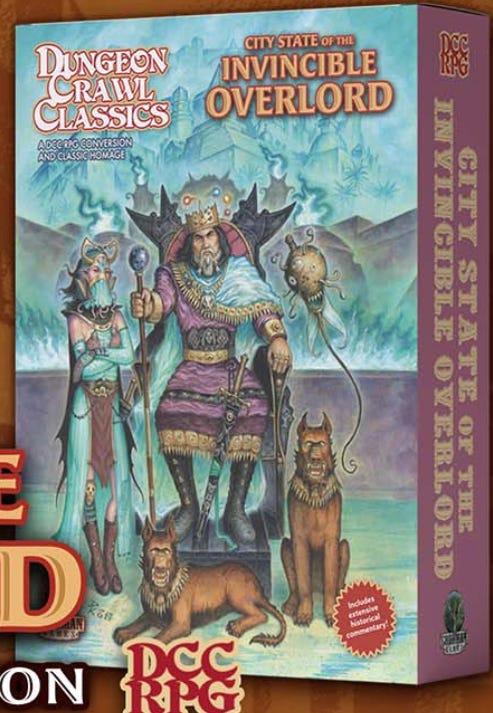

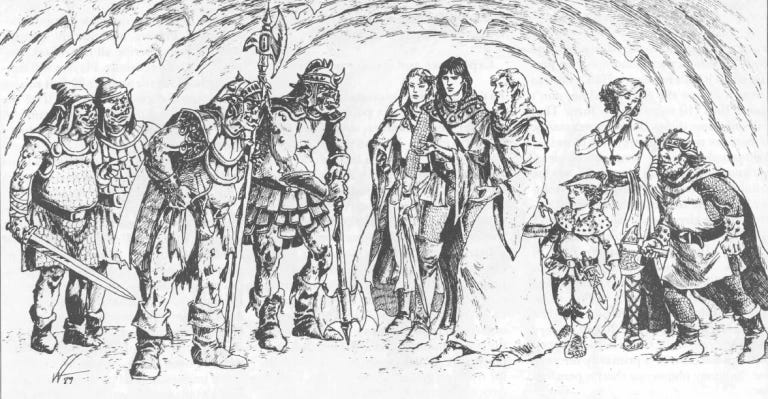
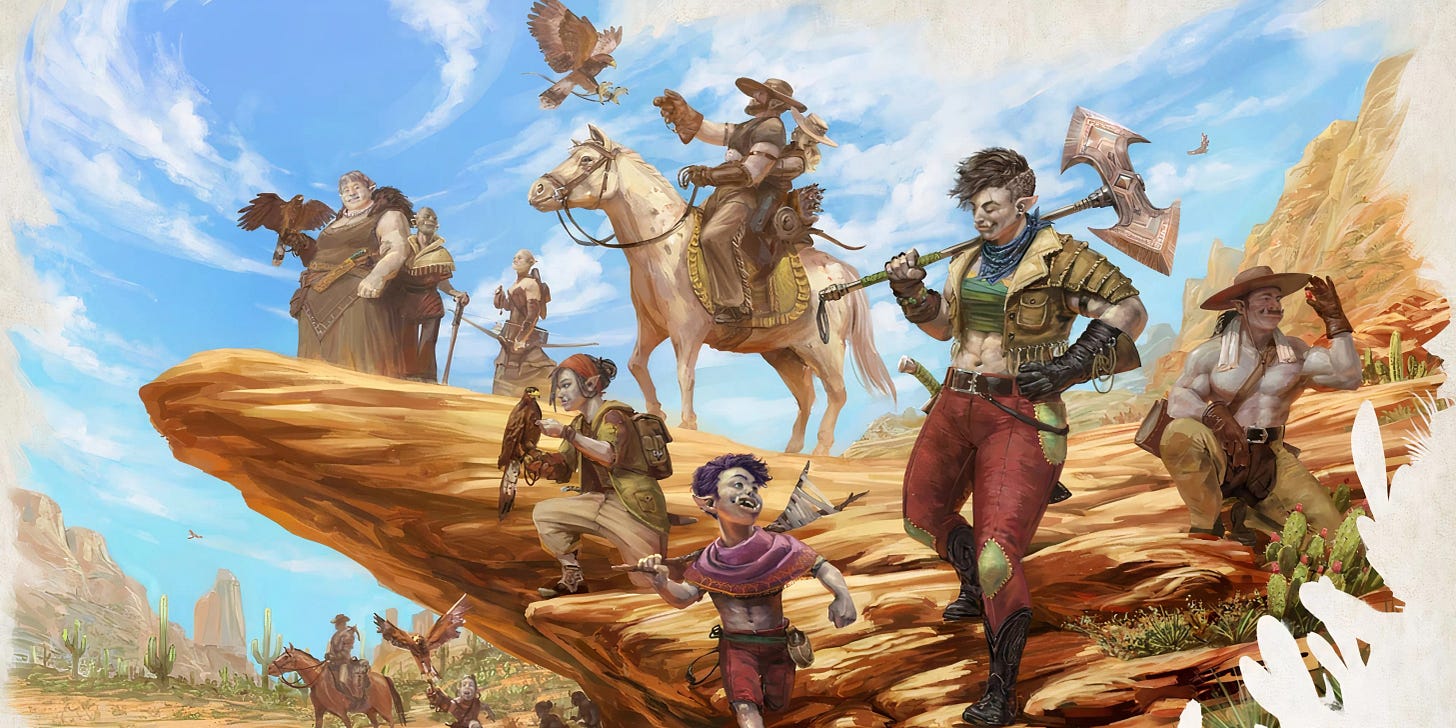
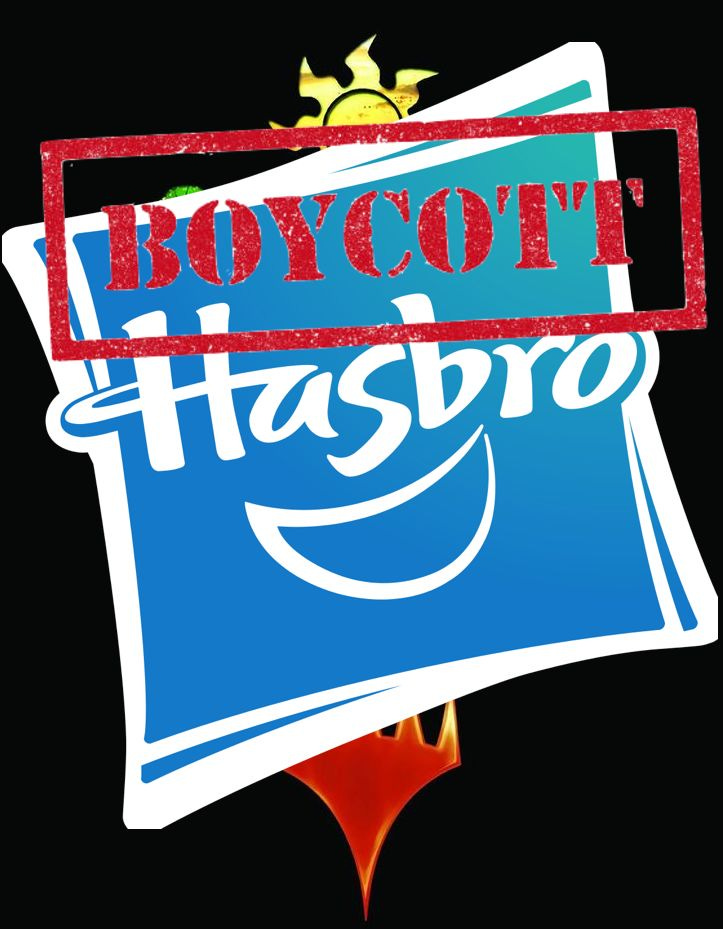
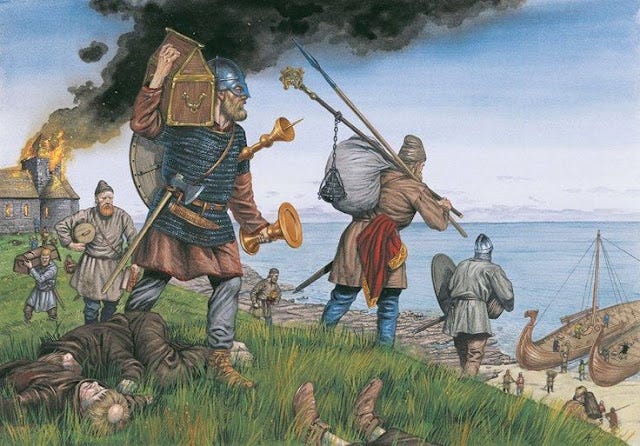
I have been having lots of fun reading OSR related game mechanics for the past 5 years, but always struggle with the culture and reading this was like a balm to the soul, thank you!